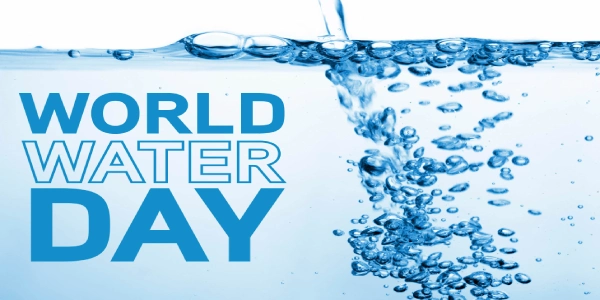World Water Day 2015

The United Nation's annual World Water Day is March 22. It's a day to reflect on the global water crisis and take small steps toward sustainability and water conservation. Clean water is something you likely take for granted, but not everyone has a faucet in their kitchen or a bathroom in their home. In fact, in some countries, clean drinking water is a rare luxury.
Even here in the United States, the population has nearly doubled in the past 50 years, increasing our water needs by 300 percent while dozens of states simultaneously face water shortages. All this and only 1 percent of the water found on earth is available for human and animal use; the rest is either salt water or frozen at the ice caps.
If World Water Day makes only one thing clear, it's that water conservation is growing increasingly important. A typical US home goes through 260 gallons of water every day. You can reduce this amount by making small, inexpensive changes around your home and yard.
Fix Leaks
First, check for indoor leaks. The most noticeable leaks are found in faucets and showerheads. That "drip, drip, drip" could be wasting hundreds of gallons per month. Leaky pipes leave water stains under cabinets and behind walls. Toilet leaks cause annoying phantom flushes. Fix these leaks as soon as you find them. Hire a plumber for help if needed.
Then, be aware of outdoor water leaks. Hoses, sprinklers, and spigots can all leak, driving your water bills up and leading to waste. Monitor sprinkler heads when watering the grass to ensure they're spraying water where you want it.
Install Smarter Appliances and Fixtures
Low-flow faucets and showerheads are inexpensive replacements for outdated fixtures. Look for bathroom faucets that restrict water flow down to 0.5 gallons per minute (gpm). Kitchen sinks should use no more than 2.2 gpm, and the most conservative showerheads use 2 gpm or less.
Low-flow toilets require a bit bigger investment, but the water savings really add up when you switch from a 3.5 gallon per flush (gpf) toilet manufactured before 1992 to a toilet that uses 1.3 gpf or less.
Water-conscious appliances can also save you big time. When you decide to replace your dishwasher, washing machine or water heater, look for a unit with the Energy Star label to ensure optimal water conservation.
Only Use the Water You Need
A huge part of water conservation is cutting back on how much water you waste with your habits. For example:
- Don't leave the water running when you brush your teeth.
- Keep your showers to five minutes or less.
- If you prefer bathing, fill the tub only halfway.
- Don't flush trash down the toilet.
- Avoid pre-rinsing dishes if your dishwasher can handle a little food buildup.
- If you must hand wash dishes, plug the sink instead of using an open tap.
- While waiting for water to get hot at the tap, fill a watering can for houseplants.
- When you refill your pet's water dish, dump the old water on plants instead of pouring it down the sink.
- Only run the dishwasher and washing machine with full loads.
- Clean dirty sidewalks with a broom, not a water hose.
- Turn off your sprinklers when it's raining.
Your small efforts to conserve water at home can have global ramifications. Be a force for good in this thirsty world and make water conservation a daily habit. Spread the word about World Water Day and get your friends and family involved for an even bigger impact.
 Click to call
Click to call


